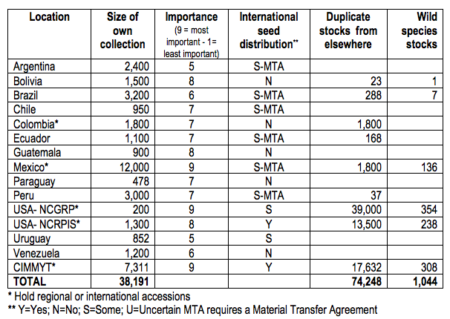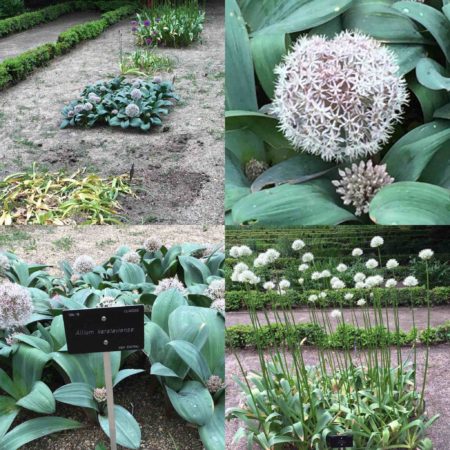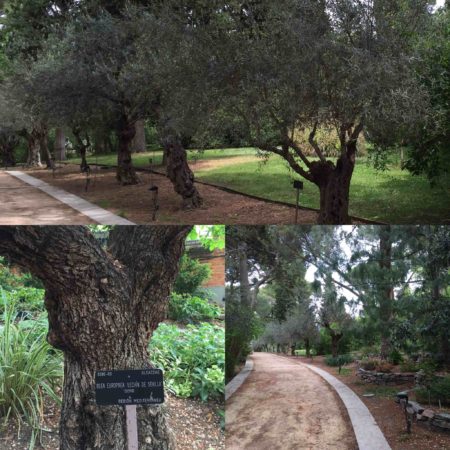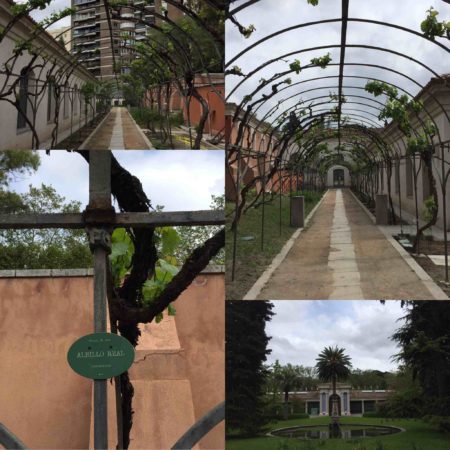Our friend Nora Castañeda summarizes the second and final day of Kew’s State of the World’s Plants Symposium. Here’s the first day if you missed it. Thanks again, Nora, and see you next year.
The second day of the SOTWP Symposium was also organized in three sessions: Useful plants, plant health and invasive plants.
Ann Tutwiler, DG of Bioversity International, started the day with the idea of super-superfoods: crops that can help targeting nutrition, adaptation and resilience at the same time. Tutwiler also accompanied her presentation with a review of the different the projects that Bioversity leads with underutilized crops and crop landraces around the world. After Tutwiler, I presented our work on the global priorities for improving the conservation of crop wild relatives in genebanks. Dr Claude Fauquet from CIAT followed me, and reminded the audience why cassava is an important crop for food security in Africa, and why it is also called the Rambo Root. Finally, Dr Olwen Grace from Kew presented her phylogenetic exploration of medicinal uses, and in particular her research on the chemistry of succulents.
After the (much needed) coffee break, Prof. Adam Kleczowski began the plant health session with a review of the impact of (appropriately) coffee diseases. Prof. Gary Foster followed with perhaps the presentation that caught the audience’s attention most, thanks to his particular style. He talked about how we’ve recorded plant pathogens and their impacts throughout history, including the expensive tulip bulbs infected with viruses during Tulipmania, and the devastating consequences of Phytophtora infestans in Ireland in the 1840’s. According to Foster: these did not only include the infamous famine, but also the movie Titanic). Prof. Sarah Gurr the presented her cutting-edge research on pests and diseases, including newly emerged diseases that may affect biodiversity and the need of having a more biosecure world, the distribution of crop pests and diseases (and its economic and physical drivers), and what’s going to happen with climate change. Closing the session, Tony Kirkham from Kew shared some of the challenges he and his team are facing in keep the trees in the arboretum alive, and their field observations on how climatic events are affecting the arboretum. Longer winters and summers, and shorter autumns and springs, are apparently not at all good for some of the species in the gardens.
The last session of the symposium dealt with invasive plants and some of the existing global policies for combating them. Dr Montserrat Vilà presented on the impacts of invasive species at the ecosystem level: in aquatic habitats, to pollination, and to phylogenetic diversity. Spoiler alert: it’s not good. Prof. Philip Hulme continued with his talk on the environmental costs of weedy-ornamental plant species, illustrated with the beauty of an invasive species in New Zealand: lupins. Hulme described how weed risk assessment in as an effective tool for controlling the spread of invasive species. Prof. Yvonne Buckley, from Trinity College Dublin, then presented her work on the drivers behind the success of exotic species in grasslands, the Nutrient Network (a global collaborative scheme studying grassland ecosystems) and how plant abundance in their native habitat can be used as a predictor of invasiveness. Closing the session (and the symposium), Dr Gerda A. van Uffelen provided some insights from a regional perspective on how to manage (and avoid) invasive species in Europe. The question is: does having a single list for all countries fit the need to prevent invasives, or can a country-tailored approach be more effective? The discussion continues…
Some final observations. On the organization, it would be great if future SOTWP symposia (the next is planned for 25-26 May 2017) could involve participants from outside the boundaries of the room, perhaps by video-conferencing to a wide audience. And with regards to the SOTWP report, it will be interesting to see to what extent it is actually used to identify gaps in botanical research, and therefore priority setting. And not just for crop wild relatives :)



